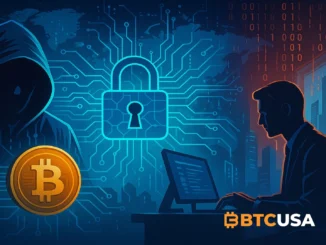
RBI Governor: Stablecoins a Threat to India’s Monetary Sovereignty
Speaking in strong words against stablecoins, termed by him as a threat to monetary sovereignty for India, the Governor of the Reserve Bank of India, Shaktikanta Das, spoke at the G30 International Banking Seminar in Washington DC. Such virtual assets, normally benchmarked against their fiat currency equivalents, could break the fetters of government control over the monetary system. He said such digital currencies, as varnished “private money,” would further open up an avenue to private entities to dominate key payment systems and thus present a threat to India’s financial stability by undermining the authority and regulation of the RBI.
Stablecoins vs. CBDCs
Das contrasted the potential damage of stablecoins with Central Bank Digital Currencies, which are digital currencies issued by governments. He mentioned that CBDCs are safer, underpinned by confidence in the government, and therefore, assure settlement finality without any collateral. Unlike stablecoins, CBDCs have been conceived with safety, transparency, and accountability, attributes that make them superior for India’s monetary ecosystem, Das said. To him, the benefits of CBDCs outweigh those of private stablecoins, which introduce vulnerabilities in the financial system as their value depends on private issuers.
Positive Reception to India’s CBDC Pilot
Earlier this month, India launched a digital rupee pilot, and already, quite some success has been registered. It had sixteen banks trialing features of the CBDC that could change targeted financial aid, such as offline transactions and programmability. Das underlined how the RBI would connect the digital rupee with India’s already established real-time payments platform, known as UPI, which presently handles more than 500 million transactions per day. Inclusion of such CBDCs should further facilitate smooth transactions and boost financial inclusions, hence improving the efficiency of payments across the nation.
Financial Inclusion and the Role of CBDCs
As per Das, further scope for financial inclusion would be provided by the CBDCs since the former will ensure funds arrive exactly where they are due. By making CBDCs programmable, a tailor-made aid and subsidies system may be implemented to deliver funds that actually reach needy hands. However, Das hastened to add that India is in no hurry to roll out the digital rupee but that RBI is working slowly to test the digital rupee for strength, security, and efficacy before it fully launches.
Future of Stablecoins in India
With growing speculation that India might reinstate a ban on private cryptocurrencies, including stablecoins, Das’s utterances portend a CBDC-centered approach. Reports have emerged that India is working on a policy paper to formalize its stand on cryptocurrency even as the country remains a frontrunner in crypto adoption on the global stage. The utterances of the RBI governor reflect India’s cautious yet strategic approach toward juggling innovation with monetary control.


